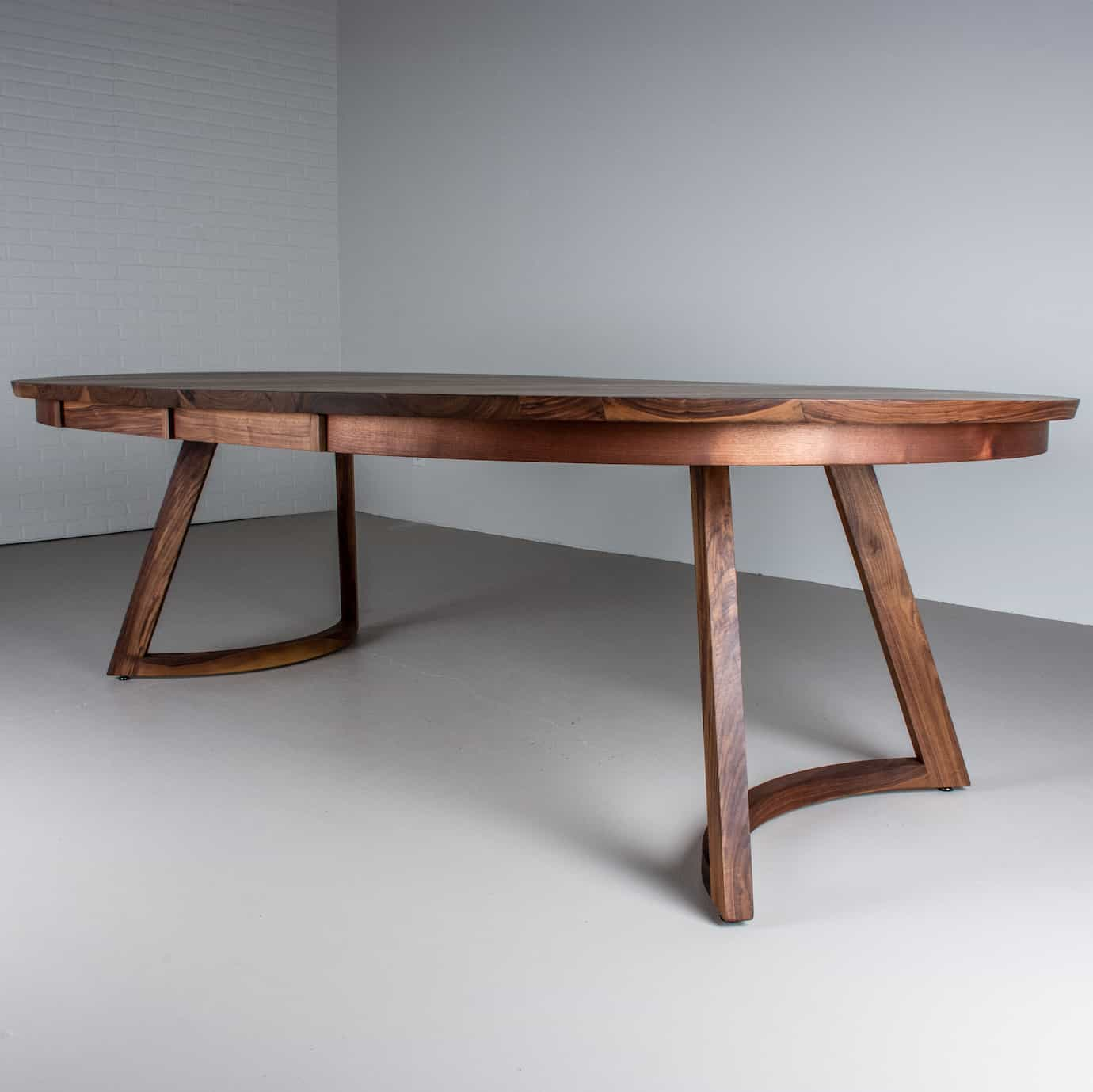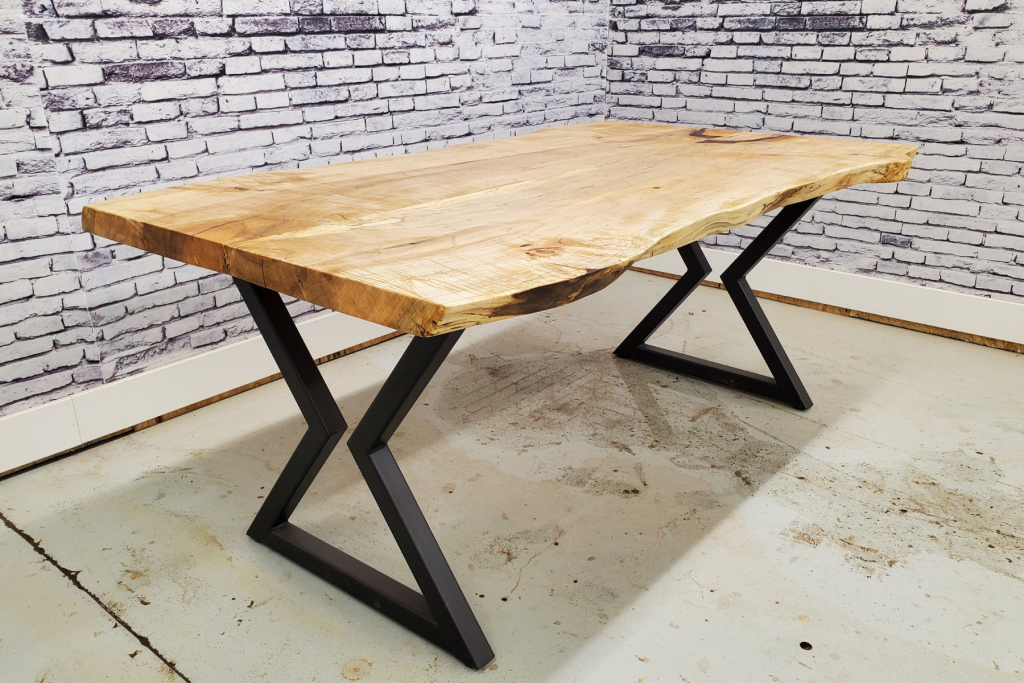Include Strength and Charm Utilizing Strong Dining Table Legs Wood Parts
Include Strength and Charm Utilizing Strong Dining Table Legs Wood Parts
Blog Article
Exploring the Different Sorts Of Table Legs Timber for Your Dining Room
The option of eating table legs timber can profoundly affect both the practical and aesthetic qualities of your eating area. Strong timber choices, such as oak and walnut, give a timeless look with unequaled resilience, while engineered timber choices use cutting-edge designs that imitate the richness of all-natural grains.
Strong Timber Options

Furthermore, solid timber is renowned for its toughness and longevity. Unlike engineered products, strong wood is less susceptible to bending and damages with time when correctly preserved. This makes it an excellent selection for households or those who often hold celebrations. Each item of strong timber is special, showcasing specific characteristics that include in the charm and character of the table.
Additionally, solid wood can be finished in numerous ways, varying from all-natural oils to tarnished coatings, enabling house owners to customize their furniture to match their design. In summary, selecting strong timber for dining table legs not only ensures architectural honesty however also enhances the aesthetic charm of the dining area, making it a rewarding financial investment for any kind of home.
Engineered Wood Alternatives

Plywood, constructed from multiple layers of timber veneer, is specifically solid and steady, making it an outstanding choice for eating table legs. Its layered make-up enables it to endure changes in humidity and temperature level far better than conventional strong wood. MDF, on the various other hand, uses a smooth surface area for painting or veneering, making it possible for designers to achieve a sleek look while keeping structural integrity.
Particleboard, frequently utilized in affordable options, supplies decent toughness and is lightweight, making it less complicated to take care of. It may not be as sturdy as plywood or MDF. It is vital to consider the desired use and desired aesthetic when choosing engineered wood choices. These products not only improve the capability of dining areas yet additionally allow for higher layout adaptability, guaranteeing that traditional and contemporary styles can coexist harmoniously.
Reclaimed Wood Includes
Redeemed timber uses an one-of-a-kind mix of sustainability and personality, making it a progressively prominent option for dining table legs. Sourced from old barns, factories, and other structures, recovered timber embodies a history that new materials merely can not duplicate. Each piece brings its very own tale, marked by distinctive flaws, knots, and varying grain patterns, which contribute to a table's special visual appeal.
Along with its visual appeal, redeemed wood is an eco pleasant option. By repurposing formerly utilized products, it lowers the need for new lumber, thus helping to preserve woodlands and reduce waste. This lines up with an expanding customer choice for lasting techniques in furniture.
Furthermore, reclaimed timber is commonly much more resilient than newly harvested wood as a result of its age. The all-natural drying out process that reclaimed timber goes through cause a denser and more powerful material, making it much less prone to warping and splitting. This boosts the long life of dining tables, permitting them to hold up against the rigors of everyday use.
Softwood vs. Wood
When picking dining table legs, understanding the distinctions in between softwood and hardwood is vital for accomplishing both visual and functional objectives. Softwoods, originated from coniferous trees, such as yearn and cedar, are characterized by their lighter weight and convenience of control. They usually show an even more rustic look, making them ideal for country-style or casual eating rooms. Softwoods are usually much less long lasting than hardwoods, which can be a consideration for family members or those looking for durability in their furniture.
On the various other hand, woods, sourced from deciduous trees like cherry, maple, and oak, are renowned for their density, strength, and toughness. The complex grain patterns and abundant hues of woods offer a advanced and ageless charm, making them ideal for formal dining settings. While woods often tend to be much more costly and larger, their durability against deterioration commonly warrants the investment.
Eventually, the option between softwood and hardwood for eating table legs ought to align with your design vision, use needs, and budget plan, making sure that your dining area mirrors your individual style while remaining useful gradually.

Finishes and Treatments
The aesthetic appeal and longevity of eating table legs can be dramatically enhanced through various coatings and therapies. These processes not just secure the timber from damage but likewise raise its appearance, permitting it to complement varied indoor styles.
One common therapy is tarnishing, which passes through the timber and improves its natural grain while including color. Spots offer a rich, elegant appearance, making it possible for home owners to match their furnishings with existing design. On the other hand, clear finishes such as polyurethane or varnish develop a safety layer without altering the timber's original hue, making certain longevity versus wear and tear.
Additionally, all-natural oils, like tung or linseed oil, nourish the timber and use a subtle shine, all while being environment-friendly. These oils enable the surface area to breathe, preventing dampness buildup and possible warping.
For those looking for a rustic charm, weather-beaten or distressed surfaces can be put on produce an aged navigate to this site appearance, adding personality to the piece. Inevitably, the choice of coatings and treatments depends upon individual preference, preferred visual appeals, and the particular wood kind, making it important to consider these variables when selecting dining table legs for your room.
Final Thought
To conclude, the choice of eating table leg products considerably affects both the aesthetic and functional aspects of a dining room. Strong woods, engineered options, and redeemed choices each deal distinctive benefits, accommodating different choices and demands. Understanding the differences between woods and softwoods, in addition to appropriate surfaces and treatments, enables for educated decision-making. Inevitably, the choice of wood type must straighten with wanted design, sturdiness, and ecological content factors to consider, boosting the total eating experience.
The option of dining table legs wood can profoundly impact both the aesthetic and functional top qualities of your eating area - Dining Table Legs Wood. Solid wood options, such as oak and walnut, provide a timeless appearance with unequaled longevity, while crafted wood choices supply cutting-edge styles that imitate the richness of natural grains. Strong wood offers a classic top quality that can raise the general design of an eating area. Each piece of strong wood is unique, showcasing specific attributes that add to the charm and personality of the eating table
Moreover, recovered timber is frequently more information extra sturdy than newly harvested timber due to its age.
Report this page